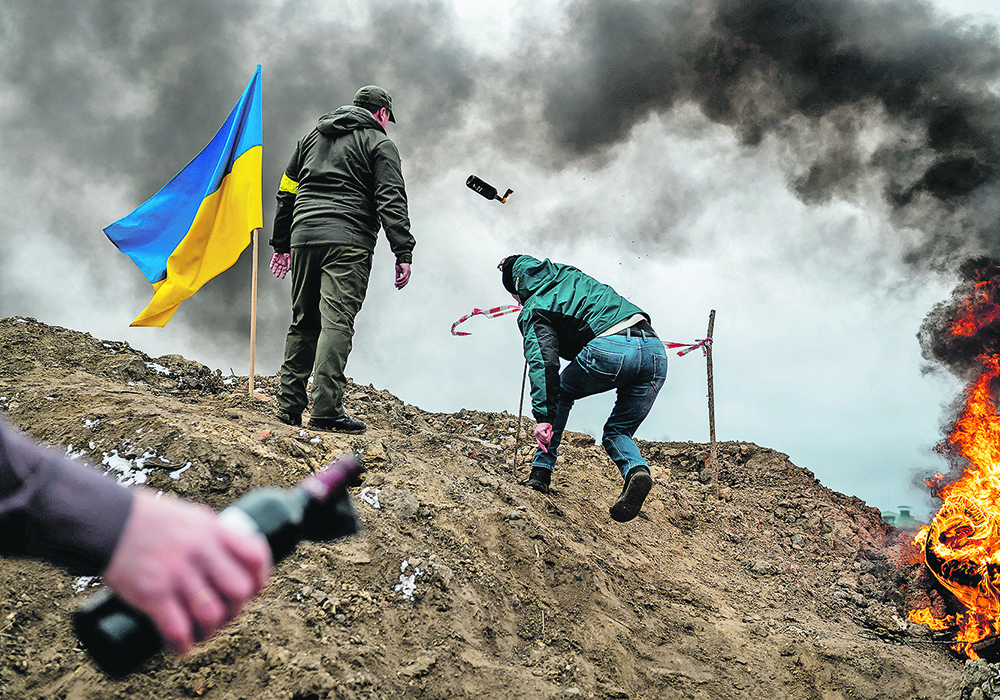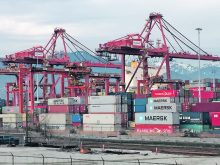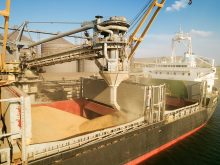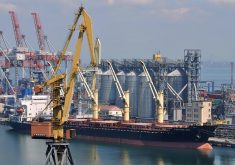Russian president Vladimir Putin shocked most of the world when he launched a military assault on Ukraine.
He also shocked commodity and financial markets, which are racing to catch up with the reality that Russia’s invasion of Ukraine is unlikely to be resolved soon.
Industries worldwide are facing the prospect that all commodities in which Russia and Ukraine are important suppliers will suddenly become scarce in international markets. That’s not good in an already super-tight market, and it will hit agriculture directly and indirectly.
Read Also

Volatile temperatures expected for this winter
DTN is forecasting a lot of temperature variability in the Canadian Prairies this winter. Precipitation should be close to average.
In agriculture circles, there’s lots of talk about wheat exports through the Black Sea being disrupted for an extended period, and possible impact upon the crops to be harvested this summer in winter wheat regions. Fertilizer markets have been hit by the direct impact of Russian exports likely being affected (Russia was the world’s number one fertilizer exporter last year), and the indirect impact of natural gas prices being in turmoil as Russia gets cut out of many markets. Farmers here might be smiling about wheat prices today, but it’s best not to look at fertilizer prices.
Russia is also a major exporter of crucial metals, such as palladium, which are key in sophisticated manufacturing, automobiles and electronics. The world was already struggling with shortages of many commodities, as well as microchips, and this will make the situation extreme. New farm technology is likely to be as affected by this as any cutting-edge industry.
Energy prices are skyrocketing as country after country moves to restrict Russian exports.
Across all industries, companies are halting purchases of Russian products out of fear of breaching new sanctions. That will raise prices.
This feeds into an already surging inflation rate that is bringing back bad memories of the 1970s, and what that time of high inflation, rising interest rates and struggling economic growth meant for western societies.
We don’t have the stumbling growth yet, but with the cost of almost everything going up, it’s hard to see consumers not beginning to cut back on purchases and overall spending. Having to pay $106 to fill up the family minivan with gas yesterday certainly caused me to gulp.
Central banks have already started tightening. The Bank of Canada boosted its key rate by a quarter-point, and many more increases are expected. Many in the United States expect seven quarter-percent increases during the next year.
That’s increasing the cost of borrowing, but it might not be enough to stop today’s inflation from running out of control.
Things were bad before Putin invaded Ukraine, but now the upward pressure on inflation is extreme and the expected robust response from central banks might need to be even more severe. That’s going to have a lot of impacts. Get ready to be squeezed.
Farm equipment isn’t going to escape these pressures. From the steel to the labour to the electronics invested in big iron, farm machinery is getting much more expensive to manufacture.
Financing livestock operation construction looks worse now than it did just a few months ago.
How will farmland hold up? It’ll be more expensive to buy, but the underlying value should be OK if farmers can keep making money from high grain prices.
We might be on the verge of stagflation actually happening, after a year of worrying that it was a real possibility. The outcome of the Ukraine war will have a major influence on this.
Russia’s hopes for a quick victory in Ukraine evaporated as the country’s military proved itself to be less capable than expected, and Ukrainian resistance proved much deeper.
Some think Putin has moved from expecting a quick victory to a plan for sieging and destroying Ukraine’s major cities. That’s not the kind of war that ends quickly, as we’ve seen in Syria and Chechnya. But it’s where Putin has gone before.
Disruptions to the 30 percent of world wheat exports that come from Ukraine and Russia are going to continue for weeks or months. Sanctions will strangle exports of key commodities and energy from Russia for a long time. Once sanctions have been imposed, how does anybody lift them without Russia leaving Ukraine? Does anybody expect that to happen any time soon?
With his Ukraine invasion, Putin has thrown the world into a quagmire of frightening possibilities. His war might not be going well against Ukraine, but if he wanted to punch the world economy in the gut, he’s succeeded brilliantly.
In the 1970s, inflation soared after Arab nations temporarily cut off oil supplies to the United States during the Yom Kippur war. That inflationary fire raged for a decade.
How long will Putin’s war and the sanctions and disruptions it has brought afflict us with an inflationary squeeze?
















